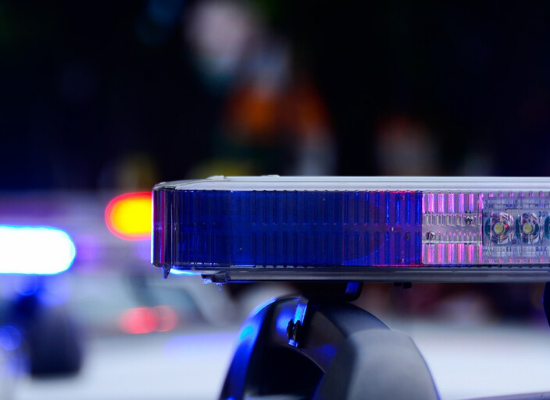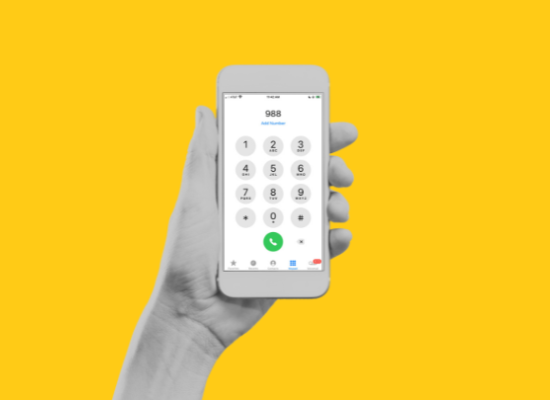
Stephanie Hepburn is a writer in New Orleans. She is the editor in chief of #CrisisTalk. You can reach her at .
In Northeast Oklahoma, there are nearly 6,000 “mental health machine” iPads in circulation. With just the press of a button, first responders, hospitals, and people in crisis can immediately connect face-to-face with the Grand Lake Mental Health Center crisis line. The Certified Community Behavioral Health Clinic, which serves adults, children, and families in 12 counties in the state, launched the program in 2016 to stay connected with its hardest-to-reach clients. Josh Cantwell, COO at GLMHC, says during the Covid pandemic, the iPads have become more vital than ever.
The program began five years ago to address spikes in the number of people in the region admitted to inpatient psychiatric hospitalization. “It was a deep-running systemic problem,” says Cantwell. People’s entry into the mental health system was time-consuming, taking up to 12 hours.
Oklahoma is primarily a rural state, points out Cantwell. Historically, it has been law enforcement who identifies and transports people experiencing a mental health crisis. The system has also long defaulted to the emergency room and inpatient hospitalization, resulting in lengthy delays for the person in distress and the officer assisting them. “Between waiting on a mobile crisis team, traveling to the emergency department for medical clearance, and finally taking people to a psychiatric hospital that might be hours away,” he says, “an officer could spend one or two shifts in transport and waiting around.”
Funneling people to the front door of the emergency department and inpatient hospitalization also typically means people are thrust into the highest level of care, which Cantwell notes is expensive and disruptive to their lives. “Outcomes are best when we match people to the services and treatments they need,” says Cantwell. While it might sound counterintuitive, exceeding the level of care someone needs can be incredibly detrimental. “The 5-10 days away from day-to-day life,” he says, “removes a person from their support system, can result in job loss, and creates the additional financial burden of high-cost hospital bills.”
To rapidly reach people in need and provide a care continuum, GLMHC decided to change its intensive outpatient center hours in Vinita, keeping it open 24-7. It’s now a psychiatric urgent care. “People walk in, and law enforcement can do drop-offs,” says Cantwell. He says this created an immediate alternative to the emergency department and inpatient hospitalization. “We provide care for people with more intense needs but also for those whose needs are lower acuity or non-urgent.”
Even with the 24-hour clinic, Cantwell and his staff recognized that geographical challenges remained. “People still had to get to the center,” he says. “We needed to find a way to increase their access.” That’s when GLMHC partnered with MyCare Integrated Software Solutions, developing an app that would enable iPads to be used for remote mental healthcare.
The iPad interface system is HIPAA compliant and allows patients and first responders to communicate face-to-face with a mental health professional. “We can immediately do assessments on the iPads,” says Cantwell, “making it easy for a first responder who comes across a person experiencing a mental health situation—they just press a button and get a secure and direct connection to us.”
The CCBHC has deployed the “mental health machine” devices in waves, first handing out the iPads to law enforcement officers, sheriff’s departments, and hospitals. As of June, the center has handed out 6,000 iPads. The vast majority (5,000) are in the hands of people at risk of crisis, while first responders have 900, including law enforcement, EMS, fire, and emergency department staff. Another 100 devices are at local libraries, museums, and other community locations. Cantwell and his team are contemplating putting kiosks with the iPads in places that are open 24/7, like QuikTrip convenience stores.
There are two ways first responders and community partners can use the device to help a person. For instance, if a staff member at the Will Rogers Library in Claremore notices someone might be in crisis, they could hit the iPad button and give the person in distress a brief explanation on how the crisis line can help. They might also prefer to first speak to the person and then contact the line. “It’s like an instant referral,” says Cantwell.
In 2020, GLMHC added a second button to the iPads that connects to a first responder helpline. “First responders can press the button and debrief after a traumatic call,” says Cantwell. He points out that, without debriefing, there’s an increased likelihood first responders would carry those feelings to the following community interaction. “Our goal is to decrease the impact of trauma on their mental health,” he says, “and decrease the chances of interactions that are going to put people in danger.”
First responders have been integral to the program since its inception, and GLMHC, points out Cantwell, needed their buy-in. That means no dropped calls or long wait times. “Someone must answer the line every single time,” he says. “The only thing worse than not having a system in place is if first responders think it’s in place and it’s not.” In June 2019, retired police officer Nick Margiotta told #CrisisTalk that law enforcement won’t reach out to behavioral health services that are inconsistent. “That’s a no-no in our culture; officers will stop calling,” he said.
Cantwell and his colleagues developed a call hunt to ensure that no calls drop and there aren’t long wait times. Staff at three GLMHC psychiatric urgent care locations, which cover 12 counties and 10,000 square miles, answer the calls. Among them are licensed clinicians, psychiatric nurse practitioners, physician assistants, and recovery support specialists. An on-call psychiatrist supervises each location. “The iPads ring in a specific order,” he says. If the first location doesn’t get answered in three rings, it goes to the next.
If staff can’t pick up the call, it triages to the program’s clinical directors and chief clinical officers. “We all have iPads in case we need to answer a call,” he says.
Another critical element to the program’s success was hiring Sgt. Jim Warring, who served 25 years with the Bartlesville Police Department, as the CCBHC’s law enforcement engagement director. During his tenure with the police department, he helped implement the iPad system and ensured officers had access to NARCAN. He also helped develop the new 24-7 first responder helpline—the line launched in October and is funded by money from the CARES Act.
Today, GLMHC’s intensive outpatient centers are psychiatric urgent care facilities. It’s also added a community-based structured crisis center, which provides five beds for short-term stays. “This allows us to treat people in the least restrictive environment,” points out Cantwell. “We are able to serve a population of 490,000 people with five beds, which shows that rapidly addressing people’s needs with the right level of care is the way to go.”
To ensure cultural concordance for American Indian tribal populations in Oklahoma, the CCBHC and MyCare answer system include Modoc Nation mental health professionals. “It’s essential,” says Cantwell, “that people can get a culturally-informed crisis response.” The center is currently in discussions with the Eastern Shawnee Tribe on a similar partnership. Additionally, tribal law enforcement agencies like the Cherokee Nation Marshal Service have GLMHC iPads.
During the pandemic, having an established telehealth technology allowed Oklahoma to quickly expand and continue 90% of its services. John Snook, director of Government Relations and Strategic Initiatives at the National Association for Behavioral Healthcare, told #CrisisTalk in May 2020 that the iPad program created a virtual bridge between intensive outpatient mental health workers and clients with high-risk needs or who didn’t have transportation. The latter, he said, “is one of the largest barriers for people seeking treatment for mental health or substance use disorders.”
Since its inception, the program has decreased inpatient stays in its service areas, dropping from 1,115 in 2015 to 402 in 2017. According to the March 2019 Healthcare Cost and Utilization Project (H-CUP) statistical brief #249, the national average cost per inpatient stay for a mental health primary diagnosis is $6,700 per admission. That means the estimated inpatient stay costs from 2015 to 2017 decreased by an estimated $5 million. Cantwell says inpatient stays declined even further between 2018 and 2020, lowering from 18 to 0.
Over the past year, GLMHC has nearly doubled its number of “mental health machine” iPads in circulation. Cantwell hopes that soon every single person who comes into one of the center’s locations will have one. “Our goal is instant 24-7 access for all people at risk and the community as a whole,” he says.









